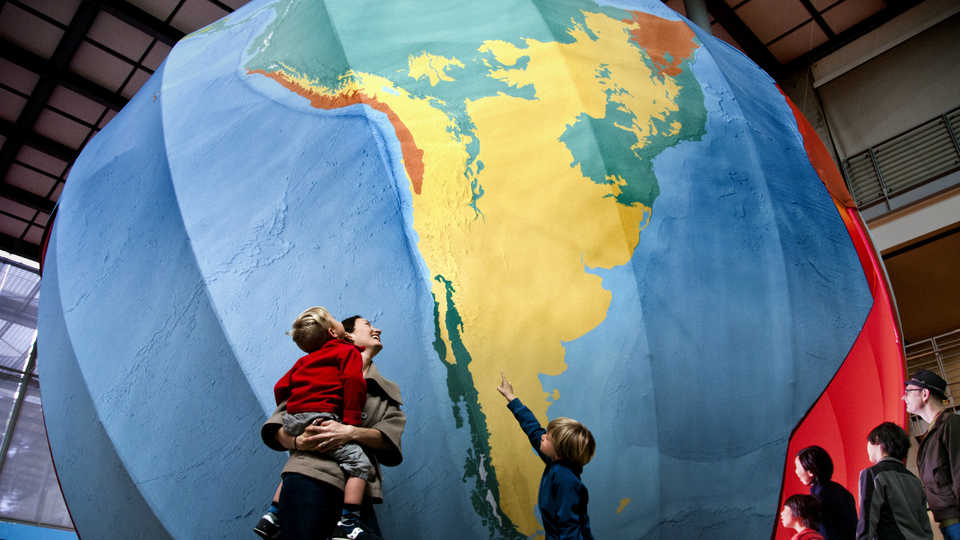
It’s a tough time in America.
Today, our nation faces unprecedented social, economic, and environmental challenges. Some of them, like ensuring affordable healthcare, reducing the federal debt, or addressing climate change, are some of the thorniest problems we have seen in generations, and are among the most divisive. And just when we desperately need to come together to solve big problems, we seem to mistrust our most respected institutions—government, media, business, and academia—more than ever.
Without such trusted institutions, how can we move forward, bring people together, and find new ways to address our most serious challenges?
Perhaps America’s great cultural institutions—especially museums—can play a more important role. In fact, I joined the California Academy of Sciences precisely because I believe museums can make a real difference in the world. There are several reasons why museums serve as agents of this much-needed change.
First of all, the reach of museums is huge. In America alone, over 850 million people visit a museum every year—nearly three times the entire population of the country. In fact, our museums see higher attendance than that of all sports stadiums and theme parks in the nation combined. Believe it or not, visiting an American museum is one of the biggest shared cultural phenomena on the planet today. And that’s a powerful place to begin.
Second, American museums are highly trusted. Survey after survey shows that Americans trust their local museums, and the exhibits and materials they present, in overwhelming numbers. At a time when many other institutions are bitterly mistrusted, perhaps museums can help weave the American social fabric back together.
Third, they are a place where many Americans learn about the world, especially for topics related to science, nature, and the environment. Numerous studies show that Americans are passionate lifelong learners of science, from preschool to our retirement years, and the majority of that learning happens in informal settings, including museums, aquariums, and parks. Museums already have a disproportionate impact on science education in America, and I believe we can do far, far more.
Moreover, museums are institutions that are designed with the future in mind. We mount expeditions, conduct fundamental research, explore unknown regions of the world, put on amazing exhibits and shows, run major educational programs, and build and maintain massive collections, all with a focus of building knowledge for future generations. At a time when most American institutions are shortchanging the future, focusing only on short-term profits, museums are continually investing in future generations. It’s a deeply held part of our institutional character.
Finally, I think museums are places that can truly bring people together and bridge our deepest divides. Sadly, in most of our media and political settings, we can’t even discuss issues like climate change or evolution without a near-complete breakdown of civility—let alone exchanging good, factual content. But we don’t see that kind of poor behavior in museums. Instead, we find that people of all walks of life, and all political and cultural backgrounds, share a genuine, positive experience in museum exhibits. People who might seem deeply divided over environmental issues suddenly find common ground while forming authentic connections to the natural world. We all share an appreciation of the beauty and wonder of nature. Everyone feels it; it builds a connection. And from there, we can start to have a real, informed conversation about the world around us.
At the California Academy of Sciences, we are committing ourselves to be a public-serving museum, using the latest tools of scientific research, global exploration, education, storytelling, and beautiful design to address some of our most pressing issues. Our mission—to Explore, Explain, and Sustain Life on Earth—commits us to do great science, share it with the world, and make sure that science imparts a true, lasting good to the world around us.
To achieve this goal, we are now concentrating on a series of major initiatives to explore, explain, and sustain the world’s coral reefs, our planet’s tropical rainforests, and California’s iconic ecosystems. I can’t think of three more important topics for us to focus on. Moreover, we are scaling up our work to the national and global stage, through our new Global Environmental Literacy Initiative and a new global media outlet due to be launched in early 2016.
We are also deeply committed to our local community. The Bay Area has been very good to us since our founding in 1853, and we owe this community an immeasurable debt of gratitude. Through our new Academy for All initiative, we will give back by greatly expanding our school field trips, youth outreach, and free admission programs. It is my long-term goal that every single child in the Bay Area can have a fantastic educational experience at the Academy, irrespective of their economic and educational background.
Call me old-fashioned, but I still believe that America can do amazing things. I believe we are at our best when we face great challenges. But we need new institutions to step up, use the new tools we have at our disposal, find new ways to bring people together, and do the hard work of tackling our most vexing problems.
You can be assured that the Academy will be on the front lines of this effort, now and in the future. I hope I can count on your support in making this happen.
In the meantime, please do not hesitate to reach out to me if you have any questions or comments—you can find me on Twitter (@GlobalEcoGuy) or on Facebook.
Best Wishes, Jon
Dr. Jonathan Foley

An expert in ecosystem science and sustainability, Dr. Foley is steering the Academy through an exciting chapter in its 160-year history, leading its efforts to explore and explain the natural world while addressing critical sustainability challenges. Read his full bio.